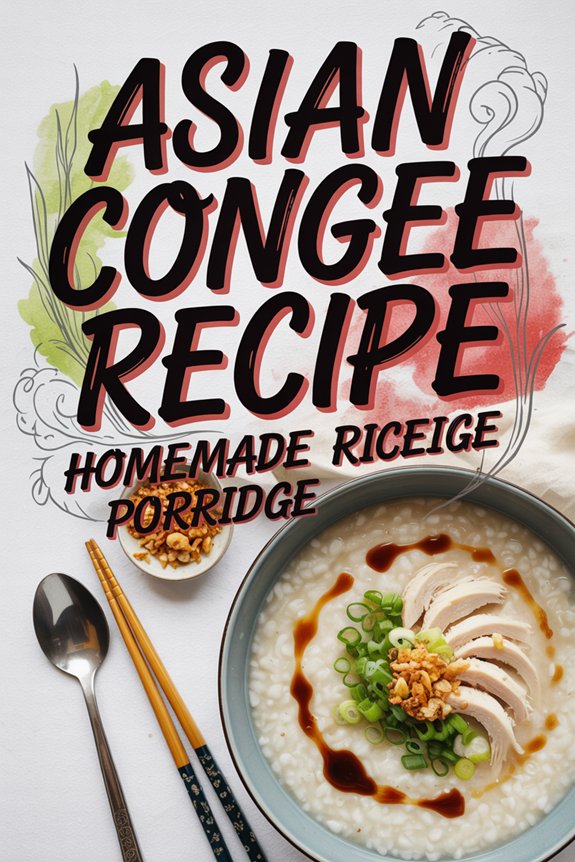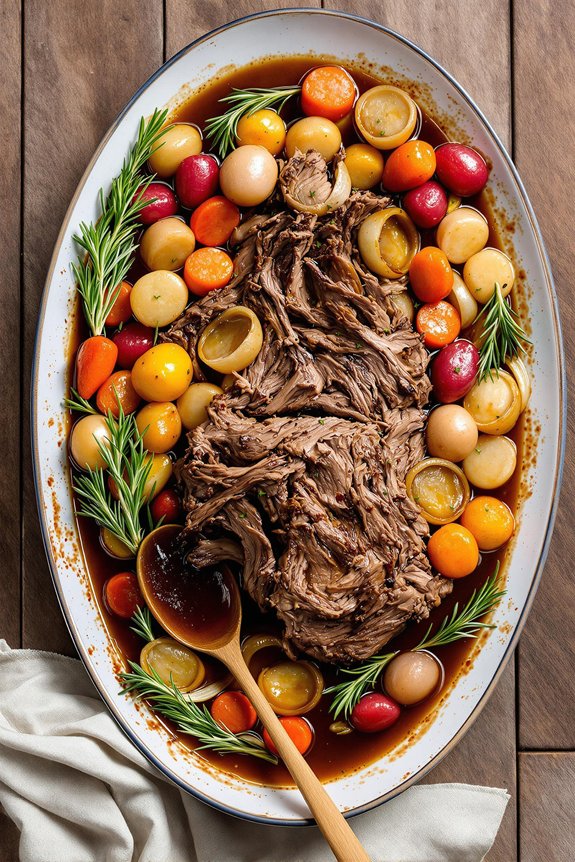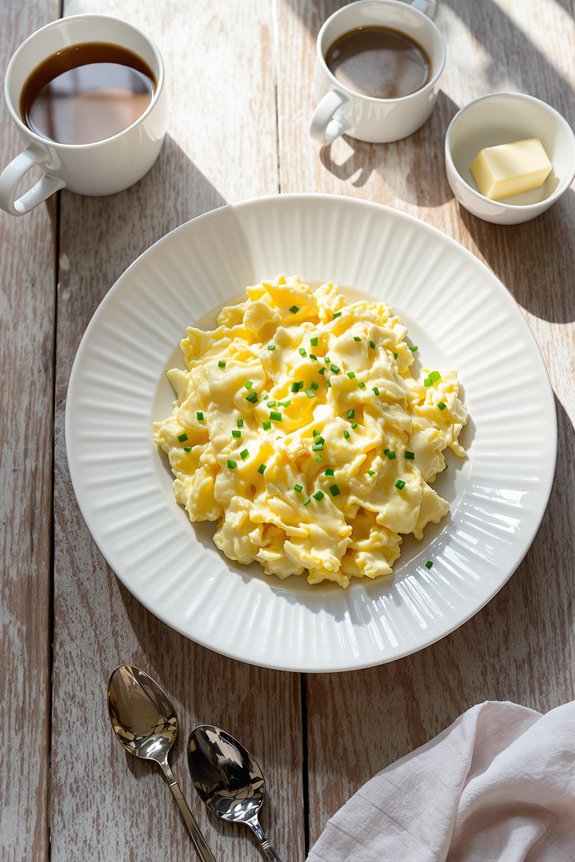Why You’ll Love this Asian Congee
Whether you’re looking for comfort food or battling a cold, this Asian congee recipe will quickly become your go-to dish.
I’m obsessed with how simple yet satisfying this rice porridge is—tender chicken, aromatic garlic, and ginger in a silky, warm bowl of goodness.
What’s not to love? It’s budget-friendly, incredibly filling, and can be customized with whatever toppings you prefer.
The browned garlic brings a delicious crunch, while the slow-cooked rice creates that perfect creamy texture.
Can’t finish it all? No problem. Congee reheats beautifully, actually getting better as flavors meld overnight.
What Ingredients are in Asian Congee?
This classic Asian congee recipe uses simple, everyday ingredients that combine to create an incredibly comforting dish.
The beauty of congee is how it transforms basic kitchen staples into something so nourishing and flavorful. The chicken adds protein while the slow-cooked rice breaks down to create that signature silky texture that makes congee so beloved across Asia.
- 1 chicken breast (with skin and bone)
- 5 cups water
- 3 tablespoons olive oil, divided
- 10 garlic cloves, minced and divided
- 1 piece fresh ginger (about thumb-sized), crushed
- 1 onion, diced
- Rice (amount not specified in the original recipe)
- Salt and pepper to taste
- 1 chicken cube (bouillon)
- Green onions for garnish
The ingredients listed are just the foundation of this versatile dish. Many people add their own twist with toppings like crispy shallots, century eggs, or a drizzle of sesame oil.
If you’re making this for someone who’s feeling under the weather, the ginger and garlic work wonders for clearing sinuses and boosting immunity.
Can’t find bone-in chicken breast? Chicken thighs work beautifully too, often adding even more flavor to your broth.
The key is letting these simple ingredients slowly simmer together, creating that perfect bowl of comfort.
How to Make this Asian Congee

Making authentic Asian congee is all about patience and layering flavors. Start by boiling 1 chicken breast (with skin and bone) in 5 cups of water until the chicken is fully cooked. This creates the foundation of your flavorful broth.
While it’s simmering, be sure to skim off any fat or scum that rises to the surface—this guarantees a clean, clear broth without any unwanted impurities. Once the chicken is no longer pink, remove it from the pot and set it aside to cool while reserving that precious broth.
In the same pot (no need to dirty another dish), heat 2 tablespoons of olive oil and sauté 1 diced onion until it becomes translucent, about 2 minutes. Then add your crushed thumb-sized piece of ginger and about a quarter of the 10 minced garlic cloves, cooking until they become wonderfully aromatic.
This fragrant base really sets the stage for a deeply flavorful congee. Now pour in your reserved chicken broth along with the rice, and season with salt, pepper, and a chicken bouillon cube. Let this mixture simmer covered, stirring occasionally to prevent sticking, until the rice breaks down and achieves that signature congee consistency.
Meanwhile, in a separate skillet, brown the remaining garlic in 1 tablespoon of olive oil until golden and crispy—trust me, this crunchy topping takes the dish to another level.
When your chicken has cooled enough to handle, remove the skin and bones, then shred the meat into bite-sized pieces. Once your congee has reached that perfect silky texture, ladle it into bowls, top with the shredded chicken, sliced green onions, and those irresistible crispy garlic bits.
The contrast between the creamy congee and the crunchy toppings? Simply divine.
For even more authentic results, consider using a Vietnamese electric stockpot which maintains the perfect gentle simmer required for traditional congee preparation.
Asian Congee Substitutions and Variations
While traditional congee follows specific ingredients and methods, you’ll find countless ways to adapt this comforting rice porridge to suit your taste preferences or pantry limitations.
Don’t have chicken? Try using pork, beef, or even seafood like shrimp or fish. Vegetarians can skip the meat entirely and use vegetable broth with mushrooms for that umami depth.
The aromatics are flexible too—lemongrass, star anise, or Thai chili can transform the flavor profile. Need it gluten-free? Just make sure your broth doesn’t contain any hidden wheat derivatives.
My favorite twist? Adding a soft-boiled egg and drizzle of sesame oil.
What to Serve with Asian Congee
Since congee serves as a blank canvas for flavors, pairing it with the right accompaniments can elevate your meal from simple to spectacular.
I love adding crispy fried shallots or garlic (like the browned garlic in our recipe) for textural contrast against the creamy porridge.
Consider serving small dishes of pickled vegetables, sliced scallions, chopped cilantro, or soy sauce on the side. These allow everyone to customize their bowl.
For a complete meal, you can’t go wrong with some steamed greens or a simple cucumber salad.
The invigorating crunch perfectly balances the warm, comforting softness of congee, creating what I call “texture harmony” at the table.
Final Thoughts
After discovering the comfort of Asian congee, I’m convinced it’s one of the most versatile dishes in any home cook’s repertoire. This humble rice porridge transforms simple ingredients into something truly nourishing, perfect for any time of day.
What I love most about congee is how it adapts to whatever you have on hand. Don’t have chicken? Use pork or keep it vegetarian. No fresh ginger? A pinch of dried works in a pinch.
The true magic happens in those quiet moments, spoon in hand, savoring each warm, comforting bite.
Isn’t that what good food is all about?





